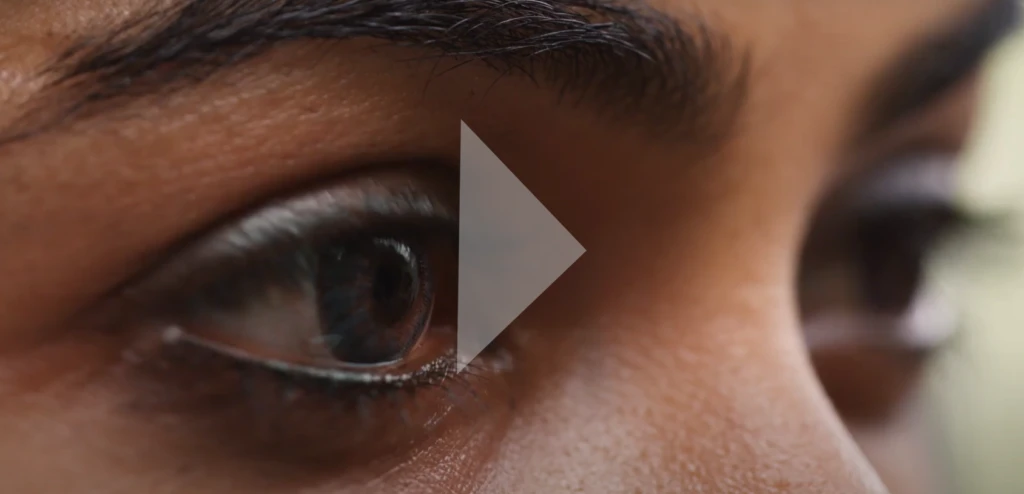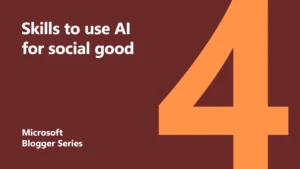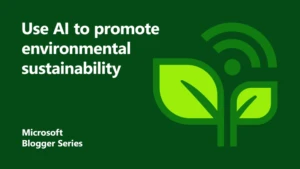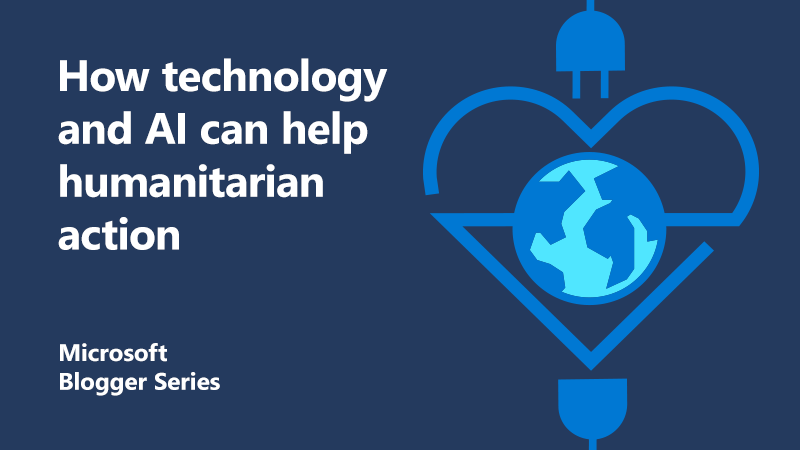
How a people-first approach to AI and technology can help empower humanitarian action
Humanitarian action is used to help nations address issues or crises around public health, environmental sustainability, cybersecurity or – especially in the case of peacekeeping – assisting nations who are navigating the difficult path from conflict to peace.
A 2018 study found that humanitarian crises are increasing in number and duration. These trends all emphasise the need for multi-stakeholder action to effectively face these societal challenges. At Microsoft, our new United Nations representation office found that successful progress requires two elements:
- International cooperation among governments
- Inclusive initiatives that bring in civil society and private sector organisations to collaborate on solutions.
To do this, we need to take advantage of technology. AI for Humanitarian Action is part of the Microsoft AI for Good programme. It aims to help unlock the power of data and AI to address some of the biggest challenges facing society today. The five-year AI for Humanitarian Action commitment aims to help change the way frontline relief organisations anticipate, predict and better target response efforts related to disaster recovery, the needs of children, promotion of human rights, and protection of refugees and displaced people.
I personally want to share four real-life examples of technology being used to deliver better response efforts and how it is helping communities around the world.
1. Information-driven peace operations and humanitarian action
By 2025 the estimated volume of the global datasphere will total 175 zettabytes, or 175 trillion gigabytes. Paired with increasing access to the internet across the world and the availability of scalable computing powered via the cloud, means that more organisations can integrate AI and machine learning with data to improve decision making.
Using AI and analytics means you can have 24/7 monitoring for not just real-time insights, but to predict. This makes it easier to prepare or engage in humanitarian action pre-emptively, resulting in less impact on the local community. For example, the Internal Displacement Monitoring Centre has an open source data platform that collects data and analytics to identify and implement solutions. It can also be used on the field to help frontline workers streamline services to the community. Forus Health uses a portable AI device that can help eliminate preventable blindness by identifying people at risk so they can seek treatment from an ophthalmologist.
Of course, it’s important to ensure AI is used responsibly. That’s why we’ve embraced responsible AI principles to ensure a people-centered approach to the research, development, and deployment of AI.
2. Empowering frontline staff and communities
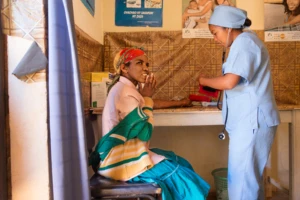 For humanitarian action, interacting with communities in person helps cause direct and effective change. However, this can mean that staff and volunteers are often on the ground in war-torn regions and countries where secure internet connectivity and technology safeguards are scarce.
For humanitarian action, interacting with communities in person helps cause direct and effective change. However, this can mean that staff and volunteers are often on the ground in war-torn regions and countries where secure internet connectivity and technology safeguards are scarce.
Aimed at eradicating poverty through sustainable development and partnerships the United Nations Development Programme (UNDP) has a fleet of around 3,000 vehicles to help deliver aid. They equipped their cars with IoT devices to help increase the safety, security, and efficiency of their staff. They can see when a vehicle has arrived safely, or if something has changed. It immediately alerts the team when a car has broken down, ensuring quick recovery.
“With this solution, we can track driver behaviour and see where a car is right now, at any time. All this contributes to safer roads, safer drivers, and safer passengers,” says Vera Kirienko, Asset Management Specialist.
Using tools that help frontline workers engage and deliver the services they need quickly is extremely important in humanitarian action. For example, when an emergency strikes, the United Nations High Commission for Refugees (UNHCR) sets up operations in countries within 72 hours. By using collaborative tools such as Microsoft 365, they have a secure and seamless environment to share ideas and brainstorm fixes to on-the-ground challenges.
“The faster you provide services, the faster you help people of concern, and the more people you serve. It’s a matter of humanity being lost or saved. That’s why it’s critically important to have IT systems in place as soon as possible—and that’s what we’re doing with Windows 10.”
Arthemon Nkunzumwami, Information and Communication Technology Officer, UNDP
Microsoft 365 also has automatic translating and subtitle tools. This makes it easier for cross-nation groups to communicate together and on-the-ground staff better serve the community with less delay.
To ensure everyone can access these tools successfully, organisations need to invest in re- and up-skilling their employees. They can then share these skills with the community to increase resilience in the community. We have a resource hub with links to free and paid training and learning paths.
3. Staying secure while providing humanitarian action
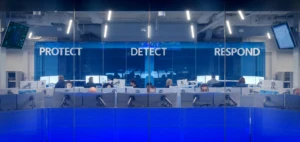 Organisations that provide humanitarian action are often dealing with vulnerable people’s sensitive data. That means they have a duty to ensure that information doesn’t fall into the wrong hands. But out in the field, it can be difficult to ensure devices get updated regularly. UNHCR uses the Windows 10 optimisation feature to deliver updates. This means just one device in a network must connect to the internet to download the update. It can then share it to the rest of the network, preventing bandwidth clogging and allowing the worker to continue delivering aid. This feature will also save UNHCR high costs, as satellite connectivity in remote areas is roughly 60 times more expensive than broadband in developed regions.
Organisations that provide humanitarian action are often dealing with vulnerable people’s sensitive data. That means they have a duty to ensure that information doesn’t fall into the wrong hands. But out in the field, it can be difficult to ensure devices get updated regularly. UNHCR uses the Windows 10 optimisation feature to deliver updates. This means just one device in a network must connect to the internet to download the update. It can then share it to the rest of the network, preventing bandwidth clogging and allowing the worker to continue delivering aid. This feature will also save UNHCR high costs, as satellite connectivity in remote areas is roughly 60 times more expensive than broadband in developed regions.
Save the Children’s contractors, employees and field staff need secure seamless access to centralised resources from some of the most remote corners of the globe. To ensure they keep vulnerable children’s data secure, they use Azure and Microsoft’s Enterprise Mobility + Security (EMS) suite of tools. This allows employees worldwide to work seamlessly from all their devices while ensuring maximum control and security on the back end.
4. Streamline operations
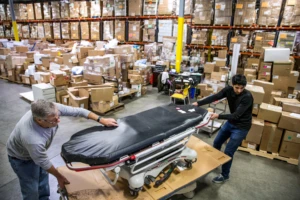 We’ve already talked about how data and analytics can provide insights for aid organisations to quickly adapt to changing environments. But it can also be used to streamline supply chains or operations, saving money, time, and increase sustainability.
We’ve already talked about how data and analytics can provide insights for aid organisations to quickly adapt to changing environments. But it can also be used to streamline supply chains or operations, saving money, time, and increase sustainability.
For example, UNHRC staff can connect new devices to the cloud quickly. In less than an hour, they can be ready to serve refugees. “Rather than waiting hours, days, or even weeks to get working equipment, we’ll be able to be up and running within 40 minutes,” Plumb says. “That means people of concern will get access to services like shelter, psychological help, cash disbursements—any protection the UNHCR provides—quicker,” says Matthew Plumb, Information Systems Officer.
The UNDP use the IoT in their vehicles to collect data, informing them on ways to group routes together or carpool with other agencies in the same area. This reduces financial and environment costs.
Human Development Foundation Pakistan (HDF) have seen that using Office 365 applications, like Forms, Planner, Teams, OneDrive, and Skype for Business ensures everyone can be part of planning and implementation of projects, no matter where they are.
“We have been able to transform our conventional ways of working to positively impact organisational productivity, while also introducing our staff to a significant set of new skills. We can now focus on empowering the underserved and realising positive social change.”
Zahid Ali Shah, IT manager, HDF
A people-led approach to humanitarian action
One common thread throughout this approach is the focus on people. All these solutions came out of the desire and focus to support people and local communities. That’s why we focus on supporting and promoting cooperation for the UN and other humanitarian aid organisations to achieve more, using computer and data science.
This year at the 75th UN General Assembly, we committed to collaborating to advance seven priorities:
1. Human rights
We’re working to advance protection and respect for human rights around the world in an era of emerging technologies and challenges. Discover more resources.
2. Environmental sustainability
We’re committed to harnessing the power of technology to help everyone, everywhere build a more sustainable future and preserving and protecting the biodiversity and health of the world’s ecosystems. Find out more about our AI for Earth initiatives.
3. Defending democracy and cyberpeace
We want to promote strong democratic institutions and electoral systems as well as advocating for clear rules for state actors in cyberspace. Learn more about digital peace.
4. Decent work and economic growth
We’re helping 25 million people worldwide acquire the digital skills needed in a recovering economy. Our GetOn campaign aims to help 1.5 million UK citizens build tech careers.
5. Quality education
We are launching global platforms to support remote learning and help address the education crisis. Find out about remote learning.
6. Broadband availability and accessibility
We’re building out internet access to 40 million people across Africa, Latin America and Asia by 2022 to help increase prosperity. Read our blog on the initiative.
7. Digitally empower UN organisations
We’re working with the UN to provides solutions to help them deliver their mission to build inclusive and prosperous societies. We’ve created a central repository of digital learning resources to enable continuous learning and digital capacity-building for UN staff and stakeholders. Discover the UN Digital Academy.
The world faces rapidly changing circumstances, bringing new and longer challenges. Now is the time to think more broadly and reimagine what effective, inclusive global governance can do for society, and to strengthen the systems and institutions that are tasked with this work.
Find out more
Microsoft and the United Nations
About the author
 Great stories demand heroes, emotions, and insight. As Storytelling & Digital Destinations Lead at Microsoft UK, Victoria Oakes places these principles at the heart of Microsoft UK’s content output. In this role, she’s driven to unify messaging and content across Microsoft using insights at the heart. Through her passion for engaging copy, visual storytelling, and data-driven insights, she truly cares about content being useful, interesting and easy to digest. As a philanthropy advocate, Victoria strongly believes in using technology for social impact, strengthening empowerment and inclusion for all and environmental sustainability.
Great stories demand heroes, emotions, and insight. As Storytelling & Digital Destinations Lead at Microsoft UK, Victoria Oakes places these principles at the heart of Microsoft UK’s content output. In this role, she’s driven to unify messaging and content across Microsoft using insights at the heart. Through her passion for engaging copy, visual storytelling, and data-driven insights, she truly cares about content being useful, interesting and easy to digest. As a philanthropy advocate, Victoria strongly believes in using technology for social impact, strengthening empowerment and inclusion for all and environmental sustainability.
The use of the United Nations name or emblem or any abbreviation thereof does not imply that the UN endorses any of the Microsoft (or its affiliates’) products or services described herein.

